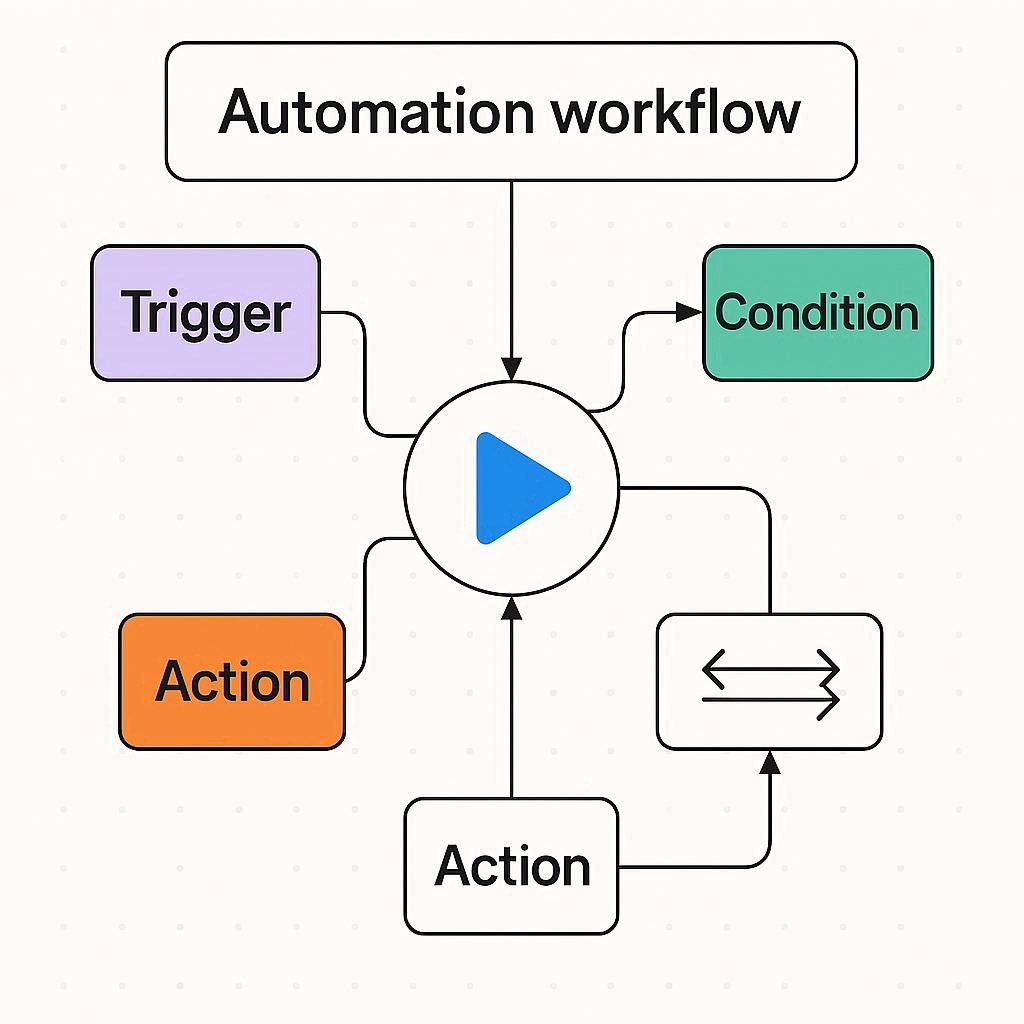The modern digital landscape presents organizations with an increasingly complex challenge of managing multiple applications and services that don't naturally communicate with each other. This integration problem has spawned various solutions over the years, with n8n emerging as a distinctive approach that combines visual programming with powerful automation capabilities. The platform addresses a fundamental need in today's technology environment: creating seamless connections between disparate systems without requiring extensive coding expertise or significant financial investment.
n8n represents a relatively new entrant in the workflow automation space, first released in 2019 as an open-source alternative to established integration platforms. What sets n8n apart from earlier solutions is its node-based architecture, which visually represents data flows and transformations in a way that's both intuitive for beginners and powerful enough for complex enterprise scenarios. The platform has evolved rapidly, adding new connectors and capabilities that position it as a serious contender in the automation toolkit of organizations ranging from small startups to large enterprises.

Core Architecture and Technical Foundations
At its heart, n8n operates on a node-based system where each node represents a specific action, data source, or processing step. These nodes connect to form workflows that can automate virtually any business process involving digital tools and services. The architecture is designed to be self-hosted, giving organizations complete control over their data and workflows, though cloud-hosted options have emerged more recently.
The technical foundation of n8n rests on Node.js, which provides the runtime environment for executing workflows. This JavaScript foundation means that custom functionality can be extended using familiar web technologies, lowering the barrier for developers to create custom nodes and integrations. The platform's open-source nature has fostered a growing ecosystem of community-developed nodes that expand its capabilities beyond the core offerings.
Workflows in n8n consist of trigger nodes that initiate automation and action nodes that perform specific tasks. Between these nodes, data flows in a structured JSON format, allowing for complex transformations and manipulations using expression languages. This data handling capability is particularly sophisticated, supporting not just simple pass-through operations but also rich data mapping, filtering, and aggregation.
Practical Implementation Scenarios
The real power of n8n emerges when examining its practical applications across different business functions. Marketing teams frequently deploy n8n to connect their customer relationship management systems with marketing automation platforms, ensuring that lead information flows seamlessly between sales and marketing activities. A typical workflow might detect new leads in a CRM system, enrich that data with additional information from external sources, then trigger personalized email sequences while notifying account executives about high-priority opportunities.
E-commerce operations benefit significantly from n8n's ability to coordinate between online stores, inventory management systems, and shipping providers. When a customer places an order, n8n can automatically check stock levels, update inventory records, generate shipping labels, send tracking information to customers, and even trigger reordering processes when stock falls below predetermined thresholds. These automated workflows eliminate manual data entry tasks that traditionally consume significant staff time while reducing errors that can lead to customer dissatisfaction.
Human resources departments find n8n invaluable for streamlining employee onboarding and offboarding processes. New hire workflows can automatically provision user accounts across various systems, schedule orientation activities, assign training materials, and coordinate equipment procurement—all triggered from a single entry in an HR information system. Similarly, offboarding workflows ensure that access rights are systematically revoked across all platforms while conducting exit interviews and processing final payments.
Advanced Technical Capabilities
Beyond basic automation, n8n offers sophisticated features that support complex business logic and error handling. The platform includes robust conditional logic capabilities, allowing workflows to make decisions based on data content or external factors. This enables the creation of intelligent automation that can adapt to different scenarios without human intervention.
Error handling represents a particularly advanced aspect of n8n's capabilities. Workflows can be designed to detect and respond to various failure scenarios, whether from API rate limiting, network connectivity issues, or data validation problems. This might include automatic retry mechanisms, alternative processing paths, or notifications to system administrators when human intervention becomes necessary.
The platform's execution model supports both synchronous and asynchronous operation, meaning workflows can either run to completion during a single request or persist across multiple execution cycles for long-running processes. This flexibility allows n8n to handle everything from real-time webhook processing to multi-day business processes that require waiting for external events or human approvals.
Data transformation capabilities within n8n deserve special attention due to their power and flexibility. Using a combination of built-in functions and custom JavaScript code, workflows can reshape data structures, perform calculations, and apply business rules during processing. This eliminates the need for separate data transformation tools in many scenarios, consolidating functionality within a single automation platform.

Integration Ecosystem and Connectivity
n8n's value proposition heavily depends on its ability to connect with external services, and the platform delivers through an extensive collection of pre-built nodes for popular applications and APIs. The integration catalog includes connectors for cloud services from major providers like Google, Amazon, and Microsoft, along with specialized business applications spanning customer support, project management, financial systems, and communication platforms.
What distinguishes n8n from many integration platforms is its approach to API connectivity. While pre-built nodes cover many common services, the platform also includes generic HTTP nodes that can interact with any REST API. This means organizations aren't limited to pre-configured connectors and can integrate with proprietary systems or less common services by directly working with their APIs.
Authentication handling represents a sophisticated aspect of n8n's integration capabilities. The platform supports various authentication methods including OAuth, API keys, and basic authentication, with credentials managed securely and reusable across multiple workflows. This centralized credential management simplifies maintenance while ensuring security best practices can be consistently applied.
For services without direct API support, n8n can leverage webhook triggers and email parsing to initiate workflows. This flexibility means that even legacy systems or applications with limited integration options can often be incorporated into automated processes through creative use of available connectivity methods.
Deployment Considerations and Architecture
Organizations considering n8n implementation face important decisions regarding deployment architecture that significantly impact performance, scalability, and maintenance requirements. The self-hosted option provides maximum control and data sovereignty but requires infrastructure management and technical expertise. Cloud-based alternatives reduce operational overhead but may introduce limitations regarding customization and data residency.
For self-hosted deployments, n8n supports various database backends including SQLite, PostgreSQL, and MySQL. The choice of database affects performance characteristics, particularly for workflows involving large datasets or high execution volumes. PostgreSQL generally represents the optimal choice for production environments due to its robust performance and advanced features.
The execution model of n8n relies on a queue-based system that distributes workflow processing across available workers. This architecture enables horizontal scaling by adding additional worker instances to handle increased loads. Understanding this scaling approach is crucial for planning deployments that can grow with organizational automation needs.
Containerization has become the preferred deployment method for n8n, with official Docker images simplifying installation and updates. This approach aligns with modern DevOps practices and facilitates integration with existing container orchestration platforms. The containerized deployment model also supports high-availability configurations that ensure business-critical automations remain available even during infrastructure maintenance or failures.

Development Practices and Workflow Management
Effective n8n implementation requires adopting development practices that maintain workflow reliability and facilitate collaboration. Version control integration allows workflows to be managed as code, enabling change tracking, peer review processes, and structured deployment across development, testing, and production environments. This approach brings automation development in line with standard software engineering practices.
Testing methodologies for n8n workflows present unique challenges since they often involve external dependencies and live data. Strategies for managing these challenges include creating dedicated testing environments with mocked services, implementing comprehensive error handling, and developing validation routines that verify data integrity throughout workflow execution.
Workflow design patterns emerge as organizations gain experience with n8n automation. These reusable templates for common scenarios accelerate development while ensuring consistency across different automation initiatives. Documenting these patterns helps spread knowledge across development teams and maintains quality standards as automation efforts scale.
Monitoring and logging constitute critical aspects of production n8n operations. The platform provides execution data that can be integrated with external monitoring solutions to track performance metrics, identify bottlenecks, and detect failures. Proper logging configuration ensures adequate information is available for troubleshooting without overwhelming storage systems with excessive data.
Security and Compliance Implications
As with any integration platform, security considerations play a crucial role in n8n deployment planning. The platform's ability to access multiple systems and manipulate data creates a potential attack surface that requires careful management. Security measures include network segmentation, credential protection, access control implementation, and audit trail maintenance.
Data protection regulations introduce specific requirements for workflow automation platforms that process personal information. n8n's self-hosted deployment option provides advantages for compliance with regulations like GDPR by ensuring data remains within controlled infrastructure. Workflow design must incorporate data minimization principles and appropriate retention policies to maintain regulatory compliance.
Access control within n8n operates at multiple levels, governing who can design workflows, execute existing automations, and access sensitive data processed by the system. These controls should align with organizational security policies and follow the principle of least privilege to minimize potential damage from credential compromise.
Encryption requirements extend to both data in transit and data at rest, with n8n supporting TLS for external communications and database encryption for persisted information. Proper certificate management ensures secure connections to external services while maintaining the integrity of data flowing through automation workflows.
Performance Optimization Strategies
As organizations scale their n8n usage, performance considerations become increasingly important. Workflow design significantly impacts execution efficiency, with factors like unnecessary API calls, inefficient data handling, and suboptimal node configuration potentially degrading performance as automation volumes increase.
Database performance directly affects n8n operation, particularly for workflows that access previous execution data or utilize n8n's internal storage capabilities. Regular database maintenance including vacuum operations, index optimization, and archiving of historical execution data helps maintain responsive performance as the system accumulates operational history.
API rate limiting represents a common challenge in workflow automation, particularly when integrating with external services that impose strict request limits. n8n provides mechanisms to respect these limits through adjustable execution delays and queue management, preventing automated processes from overwhelming connected systems.
Resource allocation for n8n workers requires careful planning based on expected workflow complexity and execution frequency. Memory requirements vary significantly depending on the size of datasets being processed, while CPU demands increase with complex data transformations and conditional logic. Monitoring resource utilization helps right-size infrastructure and identify optimization opportunities.

Emerging Trends and Future Directions
The workflow automation landscape continues to evolve, with n8n positioned to address several emerging trends. The integration of artificial intelligence and machine learning capabilities represents a significant frontier, with potential applications in data classification, predictive analytics, and intelligent process routing. n8n's flexible architecture provides a foundation for incorporating these advanced capabilities as they mature.
Low-code and no-code development approaches are gaining traction across the technology industry, and n8n sits squarely within this movement. The visual workflow design interface enables users with limited programming experience to create sophisticated automations, potentially democratizing development capabilities beyond traditional IT departments.
Edge computing introduces new requirements for workflow automation, with processes increasingly needing to execute across distributed infrastructure rather than centralized cloud platforms. n8n's container-based deployment model and resource-efficient architecture position it well for these distributed scenarios where automation must occur closer to data sources.
The convergence of workflow automation with business process management represents another evolving area. As organizations move beyond simple task automation to end-to-end process optimization, platforms like n8n will need to provide stronger capabilities for process modeling, analysis, and continuous improvement alongside core automation functionality.
Strategic Implementation Considerations
Successful n8n adoption requires more than just technical implementation—it demands strategic planning around how automation fits within broader organizational processes. Identifying suitable automation candidates involves assessing process complexity, frequency, standardization, and potential business impact. Starting with well-defined, high-value processes builds momentum for broader automation initiatives.
Organizational structure and governance significantly influence automation success. Centralized centers of excellence can accelerate skill development and maintain quality standards, while decentralized models may foster innovation and broader adoption. Hybrid approaches often emerge as organizations mature in their automation capabilities, balancing consistency with flexibility.
Measuring automation return on investment involves tracking both quantitative metrics like reduced processing time and error rates, along with qualitative benefits such as improved employee satisfaction and enhanced customer experiences. These measurements help justify continued investment in automation capabilities while guiding prioritization of new initiatives.
Change management represents a frequently underestimated aspect of workflow automation implementation. Employees may view automation as a threat to job security rather than an opportunity to focus on more valuable work. Transparent communication, inclusive design processes, and retraining opportunities help build support for automation initiatives across affected teams.
Final Perspectives
n8n has established itself as a significant player in the workflow automation landscape by combining accessibility for non-developers with sufficient power for complex integration scenarios. The platform's open-source foundation and self-hosting capabilities differentiate it from many commercial alternatives while aligning with modern infrastructure preferences around control and flexibility.
The true value of n8n emerges not from individual features but from how these capabilities combine to solve real-world integration challenges. Organizations that approach implementation with clear objectives, appropriate technical architecture, and thoughtful change management typically achieve the best results from their automation investments.
As digital transformation initiatives continue to drive organizations toward greater connectivity between systems and processes, tools like n8n will play an increasingly important role in creating the seamless operational experiences that customers and employees have come to expect. The platform's evolving capabilities and growing ecosystem position it to address these needs effectively for organizations of varying sizes and technical sophistication.